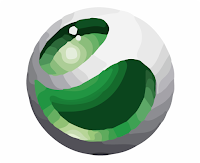Tuesday, October 13, 2015
Vector File Size Comparison
This selfie was traced using high fidelity photo option. When it was expanded and the points were visible almost the entire image was covered in points. The image wasn't even clear or visible with the unhidden points.
PEN TOOL
Closed Geometric Rectangle:
To create this closed geometric rectangle I had to use straight lines and connect them. I did this by using the pen tool and simply dragging my line across to get the length I wanted. I did the same for all four lines.Closed Curved organic Shape:
To create these curved lines I had to first create a straight line and then clicking it to drag it until I gave it a diameter, creating a curve. I did the same along my lines until I finally connected them.Curved Arrow at the End and Curved Arrow at the Start:
After you create a line, either straight or curved, you can add an arrow to either it's end or it's start (or both). To add an arrow, you have to open the STROKE window. Once you are in there, open up
The options to your left are the arrowheads for the start of your line. And the options on your left are the arrowheads for your ends. Different Stroke:
With the STROKE window still opened, you can change the weight of your line, meaning that you can make it thicker. The higher the weight, the thicker the lines appears. You can also make your lines into dashed lines. This is done by simply selecting the "Dashed line" key box.Thursday, October 8, 2015
VECTOR Self Portrait
 |
| 16 Colors |
 |
| 3 Colors |
 |
| Sketch Art |
Raster:
A raster is an image made on a dot matrix that is filled with colored pixels and varies in saving formats.Vector:
A vector is a method of electronically coding graphic images.Converting a Raster image into a Vector image:
An image that was saved as a raster on Adobe Photoshop can be converted into a vector image in Adobe Illustrator. You can do this by opening/placing the raster image in the vector program. Once you scale your image, you may trace your image onto the vector program, converting the original into a vector.My Process:
I modified my original self portraits in Photoshop to increase their saturation and their contrast. Then I traced them in Illustrator to convert them into vector images instead of keeping them as raster images. The pictures above are of images I traced on the vector program. The first image was traced using only 16 colors, the second was traced using a Sketch art option, and the third was traced using only 3 colors.Tuesday, October 6, 2015
Ai: RASTERIZE Vector LOGO
LOGOS:
Apple:
I started with this logo and I tried tracing it with 6 colors and then 16. Neither were giving it enough colors to make it look like the original. What got me the closest to the original image was tracing it as High Fidelity Photo which is how it is seen here.
Batman:
I instantly traced this with 3 colors. It seemed to have done a good job but I still tried to play with 6 and 16. I didn't see any difference so I went back to 3 colors.
Firefox:
I tried tracing this with 16 colors and although it came close to the original, the colors seemed too spaced away, there weren't nearly enough variations. I then tried tracing it as High Fidelity, which gave me much more colors.
Sony:
I noticed that this logo had a lot of colors like the firefox and apple logo. So I tried to trace it as High Fidelity like I did with them. Although it did give it a lot of colors, it looked bulky and just not good. Tracing it as Low Fidelity gave it less colors but it did keep the image a bit smoother.
Apple:
I started with this logo and I tried tracing it with 6 colors and then 16. Neither were giving it enough colors to make it look like the original. What got me the closest to the original image was tracing it as High Fidelity Photo which is how it is seen here.
Batman:
I instantly traced this with 3 colors. It seemed to have done a good job but I still tried to play with 6 and 16. I didn't see any difference so I went back to 3 colors.
Firefox:
I tried tracing this with 16 colors and although it came close to the original, the colors seemed too spaced away, there weren't nearly enough variations. I then tried tracing it as High Fidelity, which gave me much more colors.
Sony:
I noticed that this logo had a lot of colors like the firefox and apple logo. So I tried to trace it as High Fidelity like I did with them. Although it did give it a lot of colors, it looked bulky and just not good. Tracing it as Low Fidelity gave it less colors but it did keep the image a bit smoother.
Thursday, October 1, 2015
Clone Tool

How it works: Select your Clone Stamp tool and then press down on the OPTION key to select the area you want to copy. Once the area has been selected you can then "clone" that part of the image. You can then drag the clone/copy and place it wherever you'd like on the image.

Subscribe to:
Comments (Atom)












